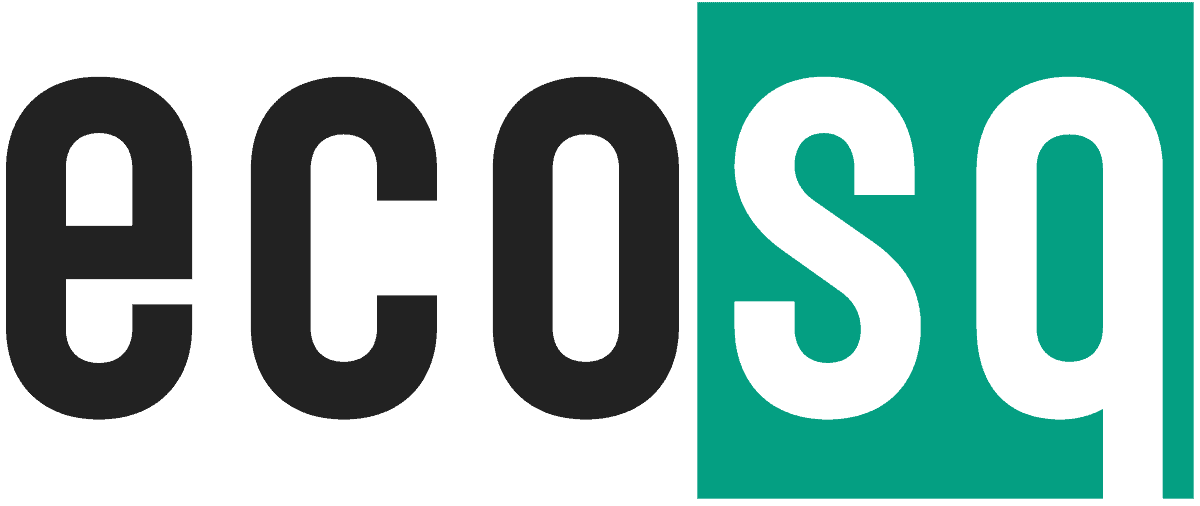Linux and Open Source: Pioneering Sustainability through the Circular Economy
This article was previously published in our newsletter. The content may no longer be up to date.
Living sustainably has become an urgent need in today’s world. With climate change looming, we must find ways to reduce waste and conserve resources. This is where the circular economy comes in – an approach that transforms how we produce, consume and reuse materials. At the heart of this movement are Linux and open source technologies, which provide the foundation for many circular innovations.
In this comprehensive guide, we will explore the pivotal role of Linux and open source in pioneering sustainability through the circular economy.
Overview of the Circular Economy
The circular economy is based on three guiding principles:
- Design out waste and pollution
- Keep materials and products in use
- Regenerate natural systems
It aims to decouple economic growth from resource consumption by using materials as effectively as possible.
This is a radical shift from the traditional linear economy, where we take resources, make products, and then dispose of them. This linear approach has led to enormous waste and pollution.
In contrast, the circular economy closes the loop by:
- Reducing waste through better design, durability and recycling
- Extending product lifespan through maintenance, reuse and remanufacturing
- Regenerating the environment by eliminating toxic chemicals and restoring ecosystems
Ultimately, the goal is to transition to a restorative, regenerative economic model that benefits both businesses and the planet.
Some key benefits of the circular economy include:
- Reduced waste and pollution
- Enhanced resource efficiency
- Supply chain resilience
- New business opportunities and revenue streams
- Job creation and skill development
- Lower carbon emissions
- Healthier ecosystems and biodiversity regeneration
The circular economy offers immense potential for sustainable growth. However, successfully transitioning requires new technologies, business models and innovations. This is where Linux and open source come into the picture.
The Role of Linux and Open Source
Linux and open source philosophies are a natural fit for enabling circular economy solutions. Here’s why:
Transparency and Collaboration
Open source revolves around transparency and collaboration. The Linux kernel and thousands of open source projects are developed through a community approach – anyone can contribute code, identify bugs, offer improvements.
This aligns beautifully with the circular economy’s emphasis on openness and cooperation along supply chains. Transparent tracking of materials enables better reuse, repair and recycling.
Customization and Interoperability
Linux offers incredible customizability to meet diverse needs. Components can be mixed and matched in many permutations.
Similarly, the circular economy requires adaptability and interoperability across products, components and systems. Open standards and interfaces allow easier disassembly, refurbishment and remanufacturing.
Accessibility and Inclusion
Linux and open source solutions are freely accessible to anyone. This drives inclusion and widespread adoption.
The circular economy also strives for broad accessibility across communities. Open source enables this by reducing costs and technical barriers for reuse initiatives.
Reliability and Security
Linux powers most of the internet, servers and enterprise systems due to its stability, security and performance.
These qualities are equally important as we build resilient circular infrastructure – from smart power grids to sustainable manufacturing hubs.
In essence, Linux and open source lay the groundwork for scalable, cost-effective circular innovations.
Open Source Circular Economy Initiatives
A growing number of open source projects directly enable circular practices across industries:
Open Building Institute
The Open Building Institute provides open source blueprints for ecological buildings using natural and recycled materials. Their Cellophane House concept uses biodegradable materials that can be composted safely at end of life.
The Plastic Bank
The Plastic Bank builds ethical recycling ecosystems in vulnerable communities. Their open source app helps collectors track plastic savings and exchange for necessities. This stops ocean plastic while alleviating poverty.
Precious Plastic
Precious Plastic is a community working on open source recycling machines that can process plastic waste into valuable new products locally. Their customizable blueprints help launch community plastic recycling shops.
Restart Project
The Restart Project hosts fixing events where volunteers help repair electronics to prolong product life. Their open source guides and manuals allow anyone to become repairers.
Faircap
Faircap has pioneered an open source compostable coffee capsule that consumers can fill themselves. This reduces single-use waste while retaining coffee quality and convenience.
These are just a few of the many open source initiatives enabling circularity globally. The possibilities are endless when knowledge is freely shared.
Applying Linux in Circular Hardware Design
Linux has a key role in sustainable hardware design aligned with circular economy principles:
- Modularity: Components can be disassembled for easier repair, refurbishment or material recovery. Modular design is common in Linux based electronics.
- Standardization: Common components, connectors and interfaces enable compatibility across models and brands. This aids refurbishment, remanufacturing and interoperability.
- Durability: Rugged Linux based devices are built for longevity and extended lifespan – critical for a circular economy.
- Documentation: Hardware documentation allows users to fully utilize, troubleshoot and maintain devices. Openly available repair manuals enable DIY fixing.
- Security: Inbuilt security features prevent hardware hacking and theft – important when extending product lifetime through reuse.
Some examples of sustainable Linux powered hardware include:
- Fairphone: Modular smartphones designed for easy repair and upgrades
- Pinebook Pro: Affordable, repairable Linux laptops
- Open source servers: Servers built from standardized components for ease of maintenance
- Raspberry Pi: Versatile Linux computer empowering DIY innovation
- Purism laptops: Ethical laptops focused on privacy, security and transparency
As you can see, Linux enables the design of resilient, future-proof devices aligned with circularity.
Linux Software for Resource Optimization
Beyond sustainable hardware, Linux powers software solutions that catalyze the transition to a circular economy. Some examples:
Waste Management Software
- Route optimization and smart bin monitoring to minimize waste collection needs
- Data analytics for streamlined waste separation and recycling
Predictive Maintenance
- Monitoring asset performance to maximize lifespan through timely repairs
Industrial Automation
- Minimizing resource use and emissions through precision automation
Supply Chain Tracking
- Enhanced transparency for tracing raw materials and finished goods
Energy Management
- Optimizing renewable energy usage across smart grids
Urban Farming
- Precision agriculture powered by IoT sensors to regenerate ecosystems
The possibilities are endless when Linux software manages resources judiciously. Open source further amplifies impact by lowering barriers for widespread adoption.
Key Benefits of Linux and Open Source for Circularity
Let’s recap the key advantages of Linux and open source in enabling circular economy solutions:
- Accessibility: Open source makes cutting-edge solutions available to individuals and organizations that lack resources to develop their own. This dramatically broadens adoption of circular innovations.
- Cost Efficiency: The free availability and collaborative development of open source results in significant cost savings compared to proprietary software. This makes circular solutions affordable at scale.
- Security: Linux’s reputation for security builds confidence for circular infrastructure and hardware handling sensitive data.
- Scalability: Linux based systems seamlessly scale from small community initiatives to large-scale industrial applications.
- Innovation: The open source community constantly innovates, sharing ideas that accelerate circular advancement.
- Transparency: Open data standards and documentation enable transparency between systems and supply chain entities – essential for circularity.
- Interoperability: Common interfaces allow disparate systems to work together, while component standardization simplifies disassembly and refurbishment.
- Developer Empowerment: Individuals can directly contribute improvements to open source projects. This crowdsourced innovation propels the circular economy.
In essence, Linux and open source uniquely democratize access to next-gen sustainable solutions.
Real-World Examples of Open Source Circular Solutions
The synergies between open source technology and circularity are already driving change worldwide:
Amsterdam Pioneers Circular Construction with The Circular Kitchen
The city of Amsterdam created The Circular Kitchen – an open source sustainable kitchen made from reused materials. All components are fully recyclable at end-of-life. The universally adaptable design will be open sourced to promote adoption in future construction.
Chilean Company Recycles 92% of Electronic Waste Through Linux Based Solution
Chilean e-waste recycler Chilerecicla employs an open source IT infrastructure to refurbish electronics and recover raw materials. So far they have recycled 4,100 tons of e-waste with a 92% recovery rate, avoiding 6,700 tons of CO2 emissions.
Indonesia Deploys Open Source Waste Management System
The city of Bandung, Indonesia has revolutionized waste management using Waste4Change, an open source solution optimized for emerging economies. By tracking waste flows in real-time and enabling citizen reporting, the city has improved collection efficiency by 30% while increasing recycling four-fold.
Open Source Bioplastic Production using Bacteria
Bioplastics offer a renewable, biodegradable plastic alternative. A team at University College London has open sourced protocols to produce bioplastic from bacteria. Makerspaces worldwide can now explore local bioplastic production from waste biomass.
These examples highlight how open technology uniquely empowers circular innovation across geographies, languages, and cultures.
Key Challenges and Future Outlook
While Linux and open source are catalyzing circularity worldwide, some challenges remain:
- Mainstream Adoption: Most businesses still use proprietary software and legacy enterprise systems. Migrating to open source requires upfront investment. Outreach and advocacy can mainstream adoption.
- Interoperability: Existing proprietary systems often employ fragmented standards, hindering integration with open source solutions. Open data standards and unified interfaces are needed.
- Skills Gap: Linux and open source skills must be developed, especially in emerging economies. Education and training programs play a key role.
- Funding: Many open source projects rely on grants and donations. Consistent funding mechanisms need to be established.
- Regulation: Policy, legislation and incentives must better support open circular innovations, particularly for SMEs and grassroots initiatives.
Despite these hurdles, the future looks bright for open source as a circular economy enabler. With rising consciousness around sustainability, organizations are actively seeking open technologies to reduce waste and emissions. Partnerships between local governments, businesses and communities will drive large-scale change.
There are also tremendous opportunities to deploy open source innovations across infrastructure, manufacturing, agriculture and the built environment. Open principles inherently create solutions that are scalable, cost-effective and accessible. This will spur rapid growth of regional circular economies worldwide.
8 Key Takeaways on Linux, Open Source and Circularity
Let’s summarize the key lessons from this guide:
- The circular economy aims to decouple growth from resource consumption by closing material loops. It provides an urgently needed roadmap to sustainable development.
- Linux and open source foster the collaboration, transparency and interoperability needed to enable circular solutions.
- Initiatives like the Open Building Institute are pioneering open source blueprints for ecological construction aligned with circular principles.
- Precious Plastic empowers local plastic recycling through open source machines. This catalyzes grassroots circular economies.
- Linux allows the design of modular, repairable electronics that last longer, such as Fairphone’s open smartphones.
- Open source software tools optimize resource use across waste management, energy systems, supply chains and more.
- Benefits like accessibility, scalability and transparency allow open source to drive circular innovation globally.
- However, mainstream adoption, funding and policy support are still needed for open source to fully power the worldwide transition to circularity.
The path to a waste-free future lies through openness and collaboration. By embracing the ethos of Linux and open source, we can build the circular solutions urgently needed for people and planet to thrive.







